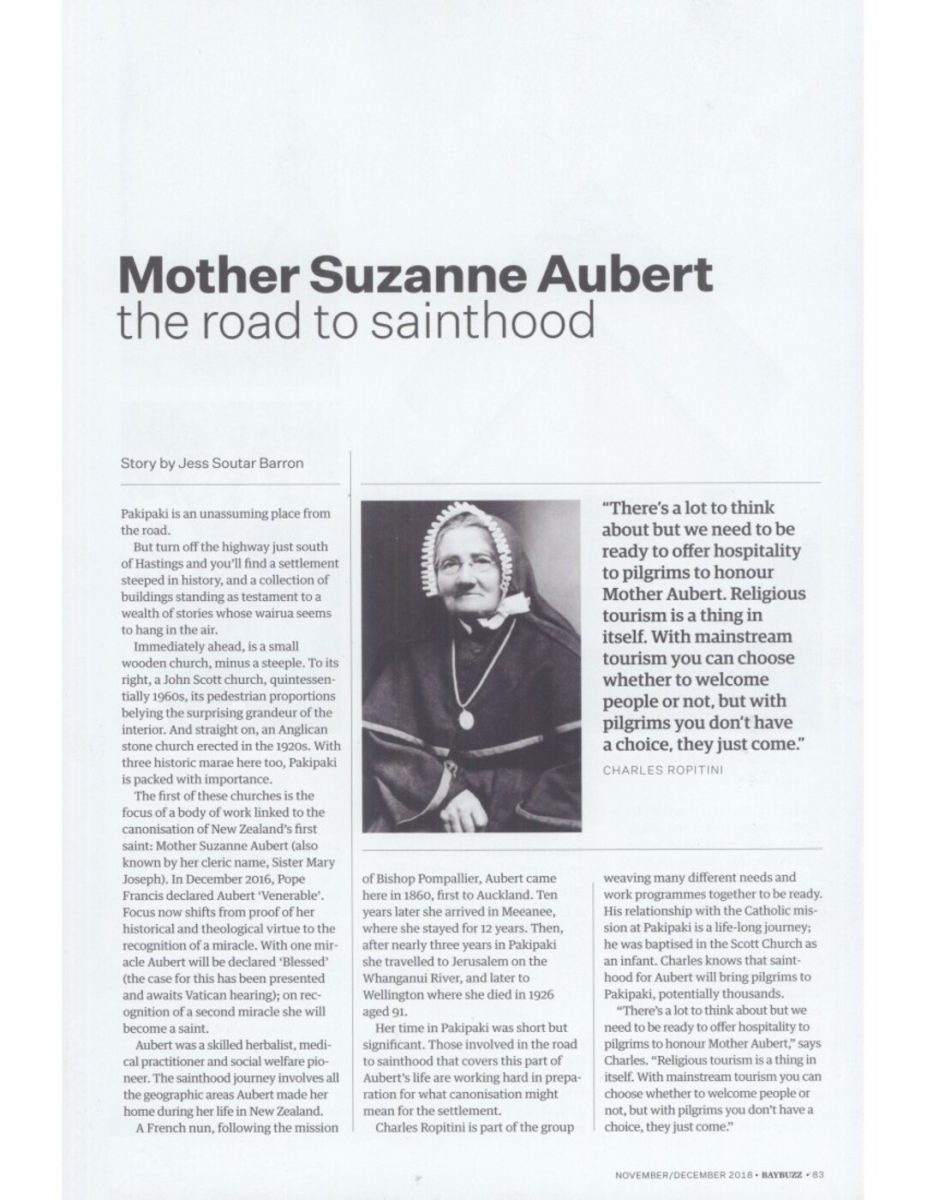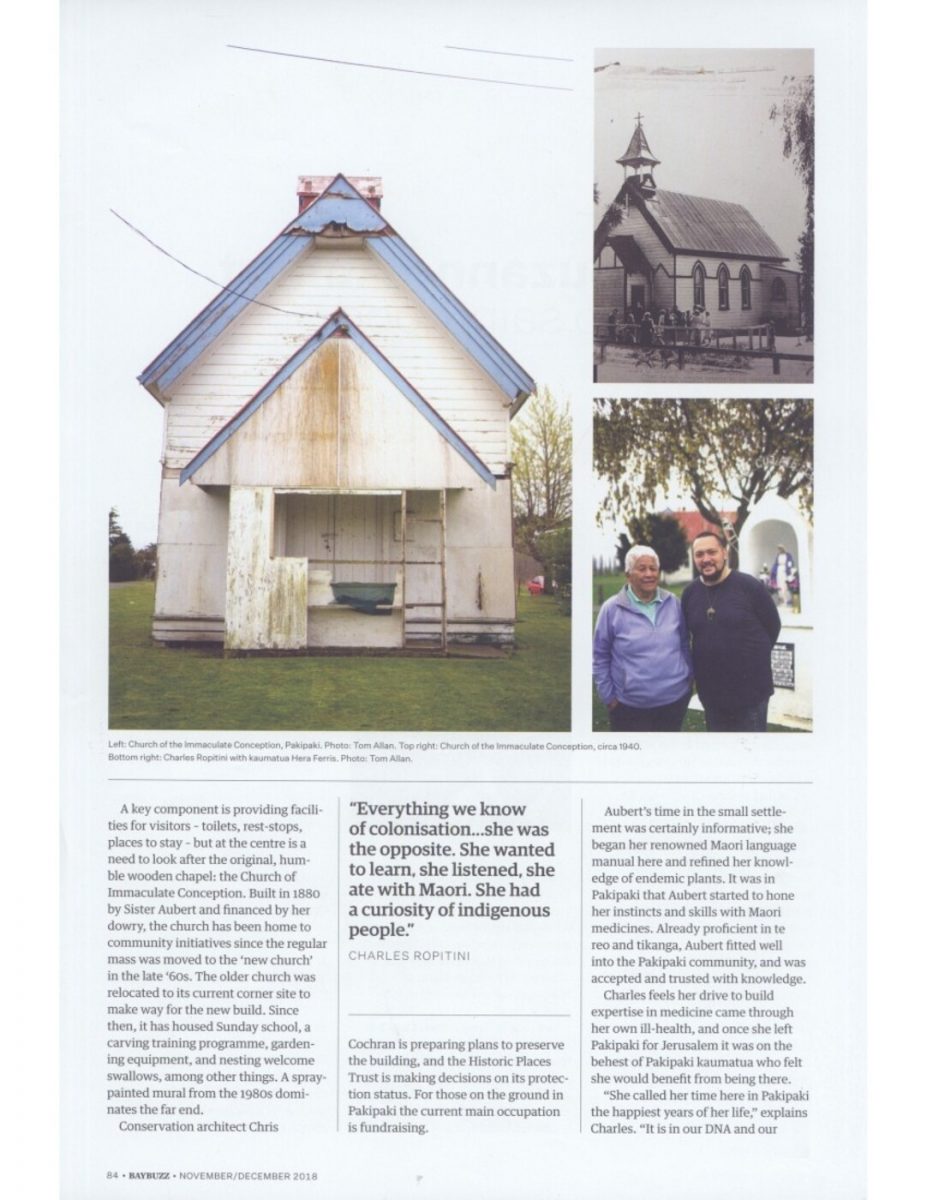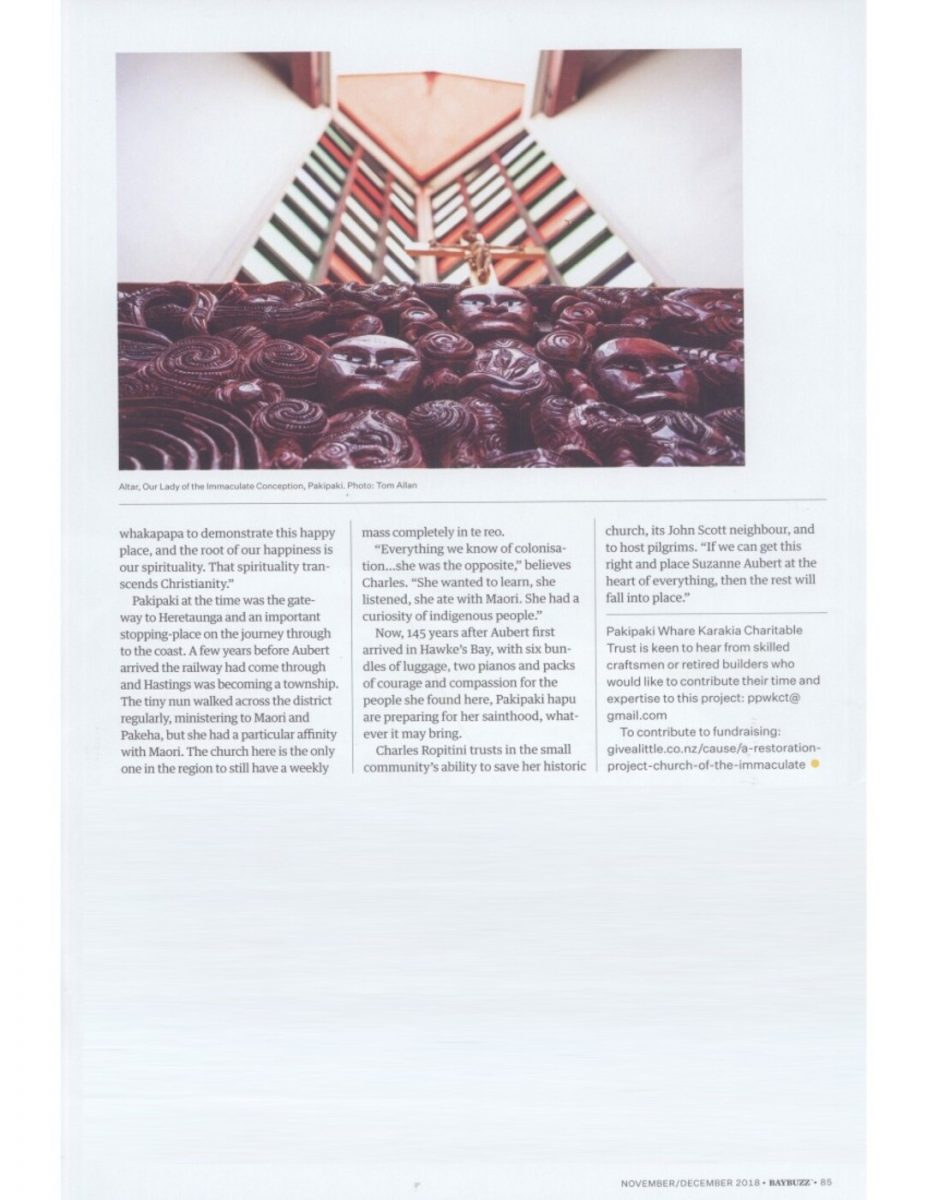Mother Suzanne Aubert
the road to sainthood
Story by Jess Soutar Barron
Pakipaki is an unassuming place from the road.
But turn off the highway just south of Hastings and you’ll find a settlement steeped in history, and a collection of buildings standing as testament to a wealth of stories whose wairua seems to hang in the air.
Immediately ahead, is a small wooden church, minus a steeple. To its right, a John Scott church, quintessentially 1960s, its pedestrian proportions belying the surprising grandeur of the interior. And straight on, an Anglican stone church erected in the 1920s. With three historic marae here too, Pakipaki is packed with importance.
The first of these churches is the focus of a body of work linked to the canonisation of New Zealand’s first saint: Mother Suzanne Aubert (also known by her cleric name, Sister Mary Joseph). In December 2016, Pope Francis declared Aubert ‘Venerable’. Focus now shifts from proof of her historical and theological virtue to the recognition of a miracle. With one miracle Aubert will be declared ‘Blessed’ (the case for this has been presented and awaits Vatican hearing); on recognition of a second miracle she will become a saint.
Aubert was a skilled herbalist, medical practitioner and social welfare pioneer. The sainthood journey involves all the geographic areas Aubert made her home during her life in New Zealand.
A French nun, following the mission of Bishop Pompallier, Aubert came here in 1860, first to Auckland. Ten years later she arrived in Meeanee, where she stayed for 12 years. Then, after nearly three years in Pakipaki she travelled to Jerusalem on the Whanganui River, and later to Wellington where she died in 1926 aged 91.
Her time in Pakipaki was short but significant. Those involved in the road to sainthood that covers this part of Aubert’s life are working hard in preparation for what canonisation might mean for the settlement.
Charles Ropitini is part of the group weaving many different needs and work programmes together to be ready. His relationship with the Catholic mission at Pakipaki is a life-long journey; he was baptised in the Scott Church as an infant. Charles knows that sainthood for Aubert will bring pilgrims to Pakipaki, potentially thousands.
“There’s a lot to think about but we need to be ready to offer hospitality to pilgrims to honour Mother Aubert,” says Charles. “Religious tourism is a thing in itself. With mainstream tourism you can choose whether to welcome people or not, but with pilgrims you don’t have a choice, they just come.”
“There’s a lot to think about but we need to be ready to offer hospitality to pilgrims to honour Mother Aubert. Religious tourism is a thing in itself. With mainstream tourism you can choose whether to welcome people or not, but with pilgrims you don’t have a choice, they just come.” CHARLES ROPITINI.
NOVEMBER/DECEMBER 2018 BAYBUZZ 83















Do you know something about this record?
Please note we cannot verify the accuracy of any information posted by the community.